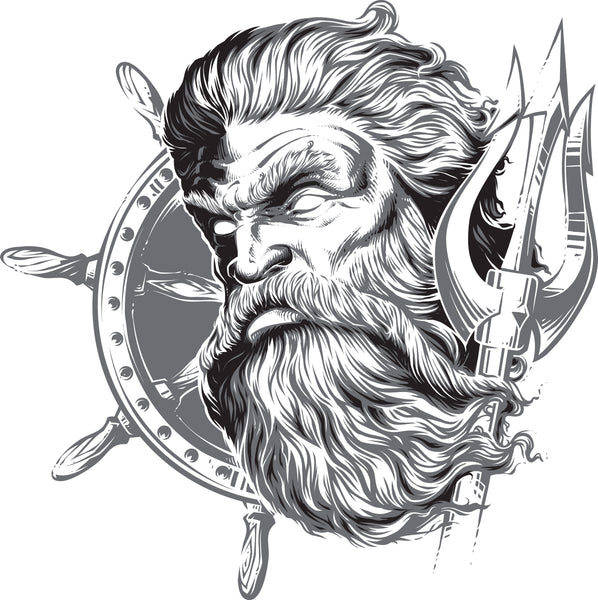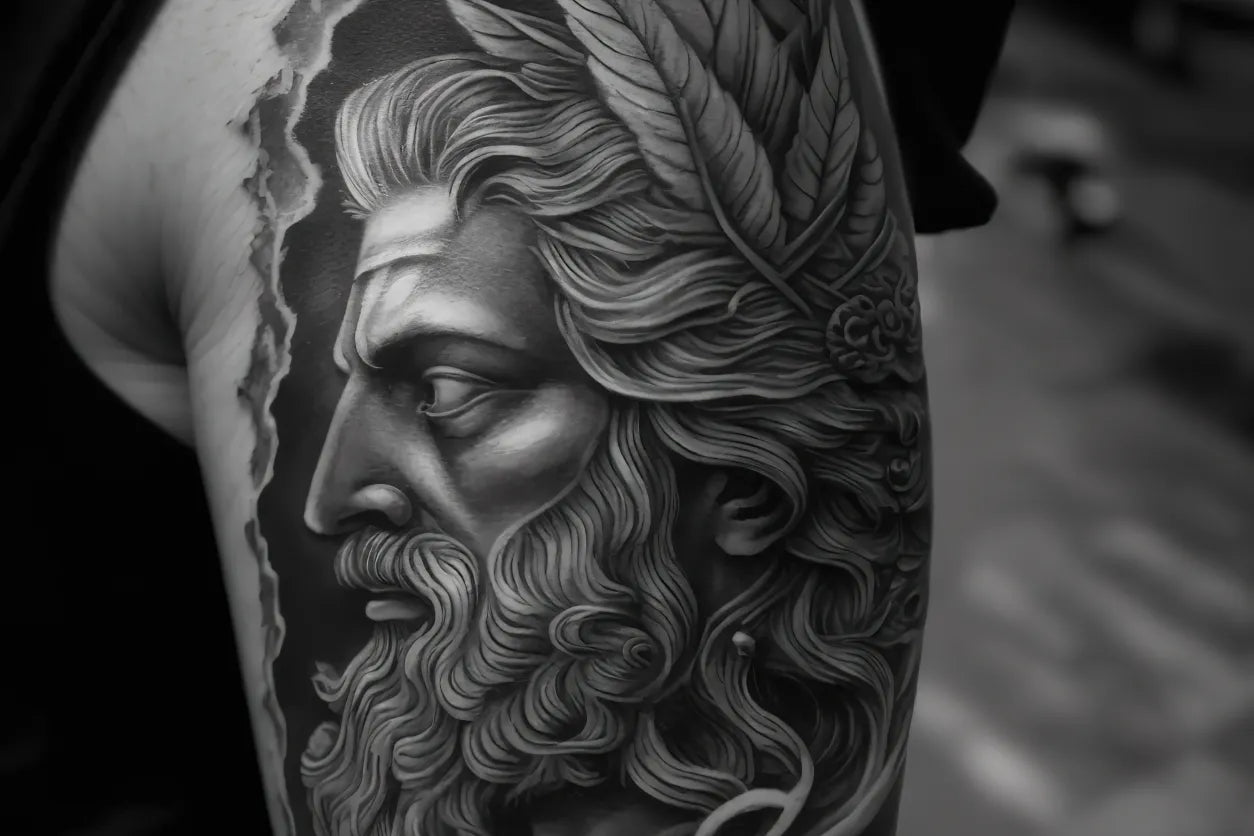Greek myths have incredible meanings and are often used as symbolism for many of the trials we endure in our daily lives. If you want a tattoo with meaning, it’s a no-brainer to search ancient myths for stories that resonate with your own.
Here are some of our favorite myths you may not have learned about in school. They may just serve as the perfect inspiration for your Greek mythology tattoo.
1. The Orphic Egg
Many myths surround Orpheus, a fabled musical auteur who was said to be allowed to fetch his wife from Hades after she died from a venomous snakebite. The rulers of the underworld told Orpheus that his wife could follow him out of the gates of Hades and become alive again as long as he trusted she was following him, and he never looked back to make sure she was there.
He turned for a glimpse before he re-entered the mortal world, and she was permanently sealed in the underworld. Orpheus shared his experiences in the underworld, creating a religious cult that regarded him as their prophet. He set forth rules for his followers, claiming that abiding by his rules would guarantee them a peaceful, eternal afterlife.
The symbol for his cult was an egg held by a snake like the one that killed his wife. It was believed the egg contained an angel who would bring light to the world. There’s a lot to unpack in the epic myth of Orpheus and so much stunning imagery that could be turned into dozens of visually stunning Greek mythology tattoos.
2. Poseidon, Ruler of Earthquakes

Aquatic tattoo motifs are fairly common. Poseidon takes things to the next level. Poseidon was one of the 12 Olympians who ruled the sea, earthquakes, and horses. He’s often depicted carrying a trident and riding a chariot of mythical half-fish, half-horse “sea horse” creatures into battle.
Poseidon was also known as the “earth shaker,” but isn’t usually depicted in his role as the ruler of earthquakes. Why not shake things up by depicting Poseidon in his role on land rather than his role in the sea?
3. Athenodorus, The Haunted Philosopher
A lesser-known but very scintillating Greek myth surrounds a philosophy scholar who rents a house despite warnings that the house is haunted. Athenodorus is interrupted in his studies by the sounds of a woeful ghost heavily dragging chains down the stairs.
Athenodorus follows the ghost to a courtyard outside his home, where the ghost reveals the location of his mortal body. Athenodorus uncovers a skeleton shackled with chains, and the discovery finally allows the ghost to move on to the afterlife.
At least a dozen amazing Greek mythology tattoos could be conjured out of this myth, especially if you’re interested in the paranormal, philosophy, or both. A philosopher and a chained ghost (or skeleton) can easily be turned into a breathtaking work of art by a talented tattoo artist.
4. Thessalonike, the Vengeful Mermaid
Princess Thessalonike, sister of Alexander the Great, was a real living person. She died shortly after Alexander the Great passed away, and a beautiful, haunting myth was written about the circumstances of her passing.
In reality, Princess Thessalonike likely took her own life. The myth puts an interesting spin on the situation.
It’s said that Princess Thessalonike washed her hair in the fountain of youth shortly before learning of her brother’s passing. The sacred water granted her the gift of immortality. After she learned that Alexander was no longer alive, she threw herself into the Aegean Sea to rejoin him in the afterlife.
Since she became immortal, her body rapidly evolved to live underwater. She became a gorgona, the equivalent of a mermaid in Greek mythology. The legend says she still swims the Aegean Sea seeking vengeance for her brother’s death.
5. Arachne’s Tapestry
Arachne was an expert weaver who created beautiful textiles and tapestry scenes. Athena and Arachne found themselves in a weaving contest, where Arachne self-assuredly claimed that any tapestry she wove would be better than a tapestry woven by Athena.
The women held a contest. Athena wove a tapestry depicting the victory of the gods, and Arachne wove a tapestry that depicted their failures. Athena became outraged by Arachne’s acknowledgment of the failures of the gods and destroyed all of her weaving supplies, leaving her with nothing and implying her exile.
Arachne felt as though she had lost everything and hanged herself. Athena had second thoughts about how quickly the situation escalated and felt guilty for Arachne’s death. Athena granted her a second life in the form of an immortal spider so she could weave forever.
This story would make an absolutely badass embroidery-style tattoo. If you know a gifted tattoo artist who can mimic the appearance of woven or embroidered works, think about the incredible story you could tell in inked-on threads.
6. Galatea Comes to Life
Pygmalion was a gifted sculptor who created a statue of a woman he declared to be his perfect love. He developed a deep affection for the statue Galatea because he had literally handcrafted his perfect mate. He adorned the statue with beautiful clothes and expensive jewelry, preferring to spend his nights by her side.
Pygmalion had the opportunity to ask Aphrodite, the goddess of love, to turn Galatea into a real woman. Aphrodite believed his love for the statue was pure and true, so she granted his request. Galatea soon came to life, and she and Pygmalion spent the rest of their days together.
How awesome would it be to have a tattoo of a sculpture coming to life? There are endless creative approaches your artist can take to depict the transformation of Galatea.
These Tattoos Sound Like They’ll Hurt

An epic Greek mythology tattoo will likely take a few sessions. There’s so much rich history and important lore to incorporate into your tattoo, and ancient Greeks were known for their love of art. You’re probably going to wind up with a fairly large piece, and healing a large piece can be painful.
Don’t twinge every time you move your arm, lift your leg, or turn to your side. Spritz your tattoo area with our numbing spray for tattoo to take the edge off.
You’ll hardly feel anything while your tattoo heals. Make sure to follow your artist’s aftercare instructions word for word — you don’t want to risk destroying their masterful work of art, especially since you literally bled for it.
Sources:
ORPHIC RHAPSODIC THEOGONY | HellenicGods.org
Poseidon, Greek god of the sea, floods and earthquakes | GreekGods.org
The Story of Arachne and Athena | Stephen Hicks
Jean-Léon Gérôme | Pygmalion and Galatea | The Metropolitan Museum of Art




